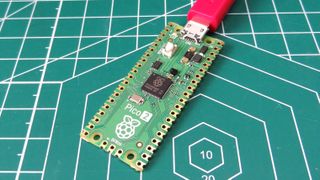
This dual-core microcontroller allows users to choose between the traditional Arm Cortex-M33 architecture and the increasingly popular RISC-V open standard, broadening the Pico 2's appeal across various tech communities. The chip's ability to toggle between architectures means it can cater to diverse applications, from embedded systems to more complex IoT projects.
The Pico 2 maintains the same form factor as its predecessor, ensuring compatibility with existing Pico accessories and shields. However, it brings several enhancements to the table. The new microcontroller includes 2MB of QSPI flash memory, more than doubling the storage available on the original Pico. Additionally, the updated GPIO pinout remains consistent, allowing for seamless integration with established Pico projects while offering improved performance and flexibility.
Alongside its dual-core capability, the Pico 2 provides developers with enhanced connectivity options. The device includes USB 1.1 support and features like I2C, SPI, and UART, making it versatile for various applications. While Wi-Fi support remains absent, the Pico 2's price and capabilities still make it a highly attractive option for developers looking to explore the potential of RISC-V technology.
The Raspberry Pi Pico 2's release underscores the Foundation's commitment to making accessible and affordable technology available to the global developer community. With the Pico 2, Raspberry Pi continues to push the boundaries of what's possible in the microcontroller space, providing a robust platform for innovation at a remarkably low price point.
This release comes at a time when RISC-V is gaining traction as a viable alternative to proprietary instruction sets like Arm. The inclusion of RISC-V in a mainstream product like the Pico 2 signifies a growing interest in open hardware and the potential for broader adoption in the industry.
As developers begin to experiment with the Pico 2, it will be interesting to see how the blend of RISC-V and Arm architectures impacts the microcontroller ecosystem and what new projects will emerge from this versatile platform.
The Raspberry Pi Pico 2 is now available for purchase through official Raspberry Pi distributors, continuing the Foundation's tradition of delivering high-performance computing tools at a fraction of the cost seen elsewhere in the industry.